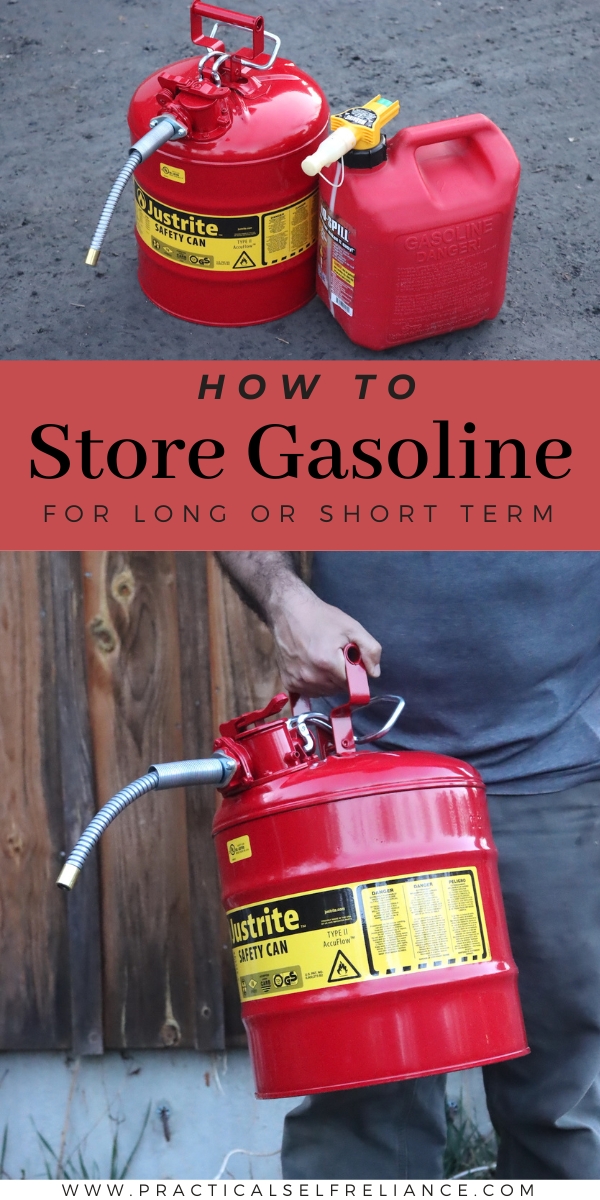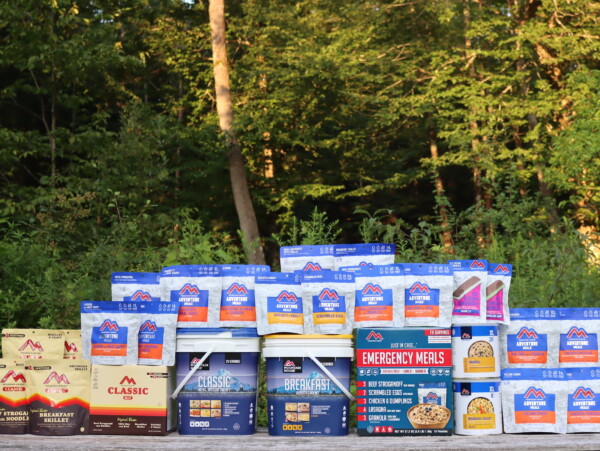Affiliate disclosure: This post may contain affiliate links. Please see our Privacy Policy.
Storing gasoline at home can be lifesaving in an emergency, but only if it’s stored properly and safely.
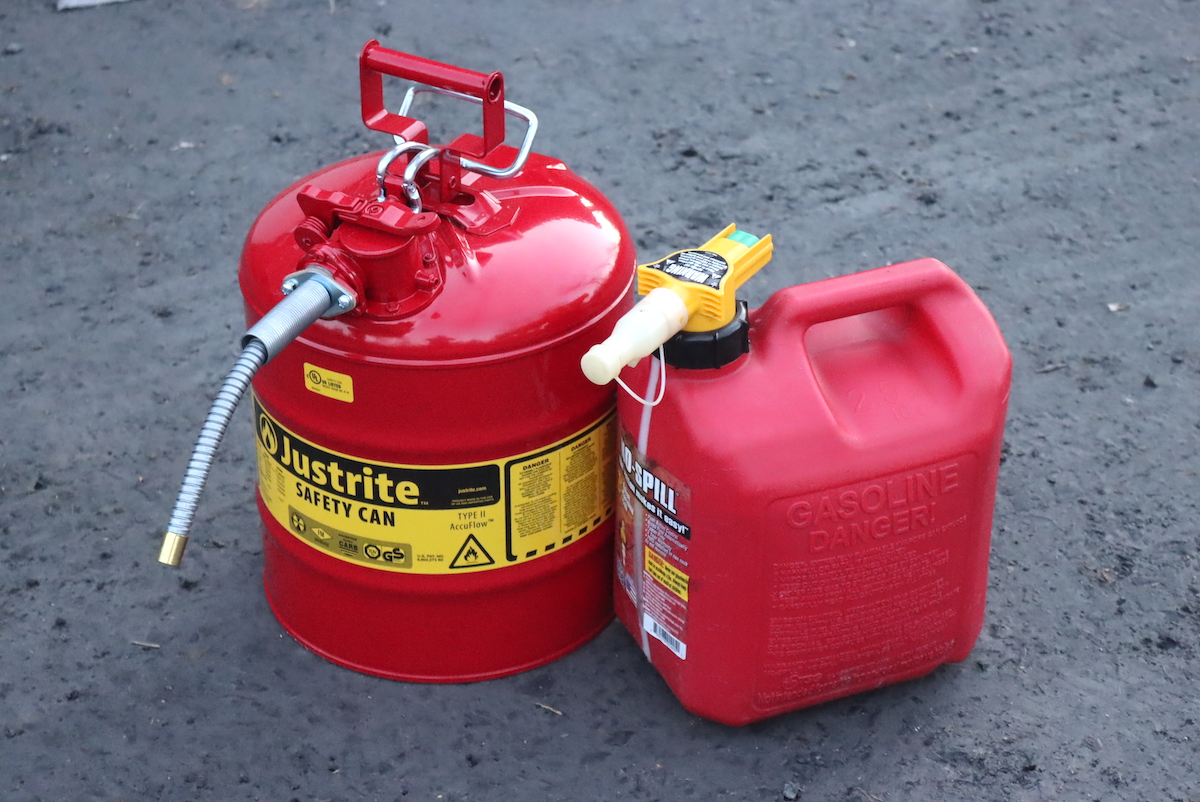
(This tutorial is written by my lovely and talented husband Jack, who keeps all the machinery fueled and working around here.)
In areas prone to hurricanes, storing some extra gasoline is considered a normal thing; periodic supply disruptions, caused first by the panic buying by everyone who failed to store some gasoline, and then by damage to road networks and the gas stations themselves after the storm hits, means having an extra can of gas on hand can save a lot of trouble.
For us up in the north, having gasoline on hand is necessary for our yearly ice/wind storms, which can bring down thousands of trees and cause extended power outages.
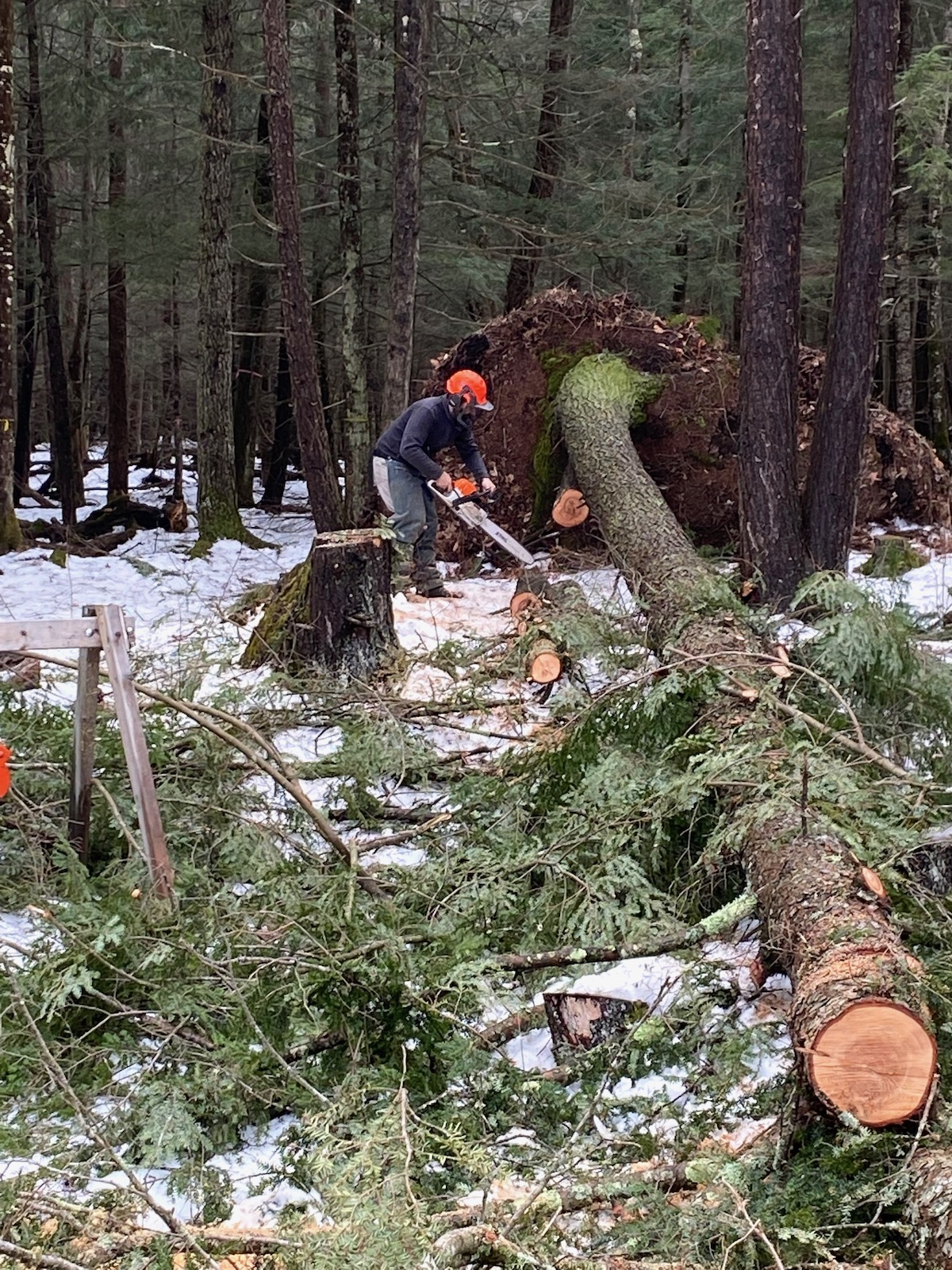
Last December, such a storm hit us dead on, and power was not restored for many people in our area for over a week.
It’s not uncommon to need to be able to cut 2 or 3 trees that have fallen across our long driveway, and if we ever found ourselves without gas to run our chainsaws, we would have a significant problem.
Small portable battery banks can provide emergency power to keep phones charged and small appliances running, and they’re ideal for power in shorter emergencies lasting more than 24 to 48 hours.

Gas-powered generator can produce more power for longer periods, and they’re perfect for longer outages caused by significant weather events.
They work for a much longer time, keeping freezers cold, running air conditioning, charging laptops and phones, and even charging a battery bank for use with lighter draw needs, so you don’t need to run the generator as many hours.
And, of course, with all the hype around electric vehicles (EV) in the news, it’s easy to forget that EVs are still just a tiny percentage of all vehicles on the road. Being able to fuel a vehicle, even when fuel pumps are unavailable due to power outage or supply disruption, allows the ability to leave a potentially bad situation.
Whether you have a gas powered vehicle, or an EV that you can keep running with the help of a gas generator, storing gasoline can get you out of a number of tricky emergency situations.
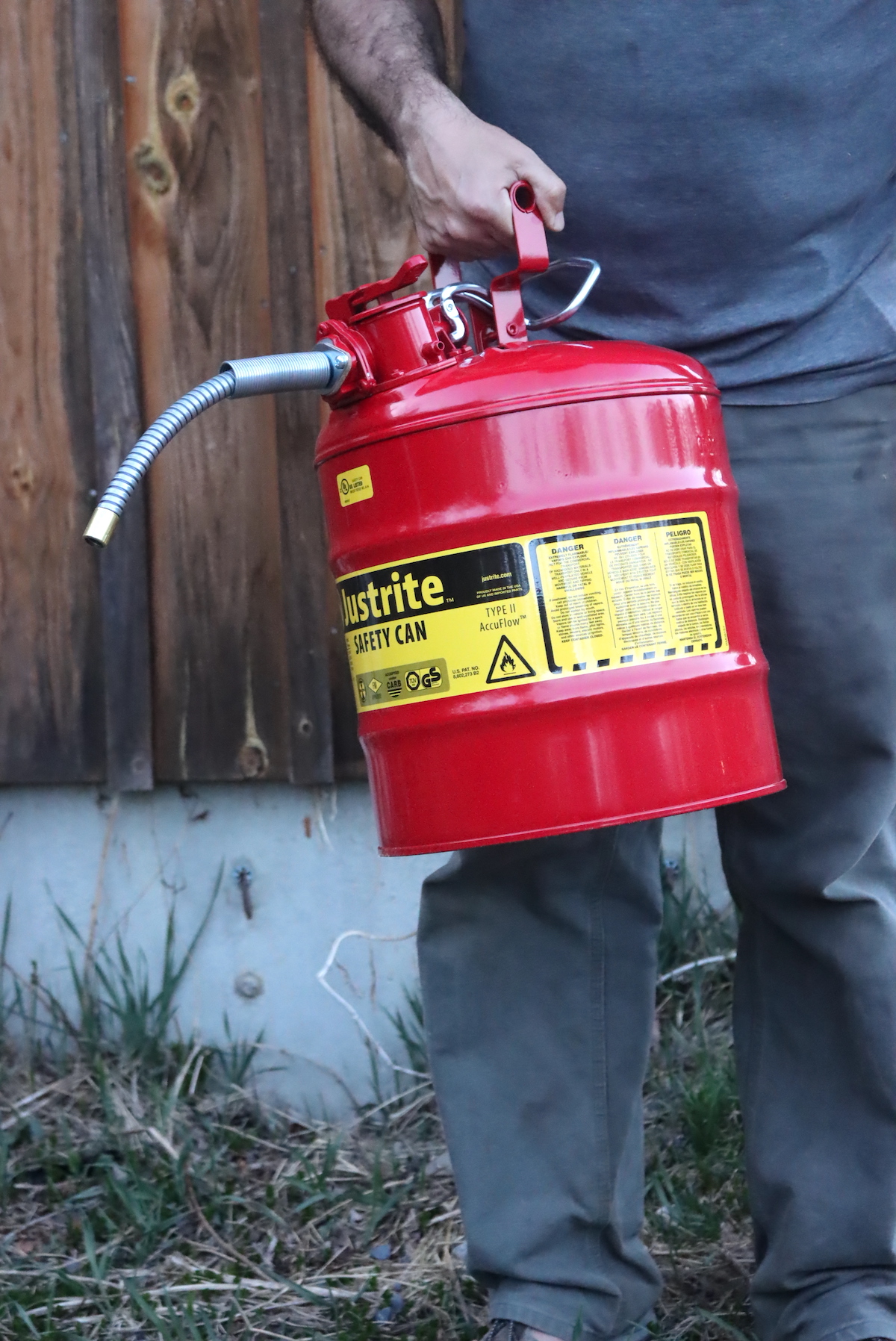
How to Store Gasoline
Fuel containers come in a few different colors, usually red, yellow, and blue. This is not to provide a festive display of your stored fuel; red containers should contain gasoline, yellow is for diesel fuel, and blue is for kerosene.
You do not want to put the wrong fuel type into an engine and potentially ruin it, so to avoid expensive mistakes down the road, stick with red containers for all gasoline storage.
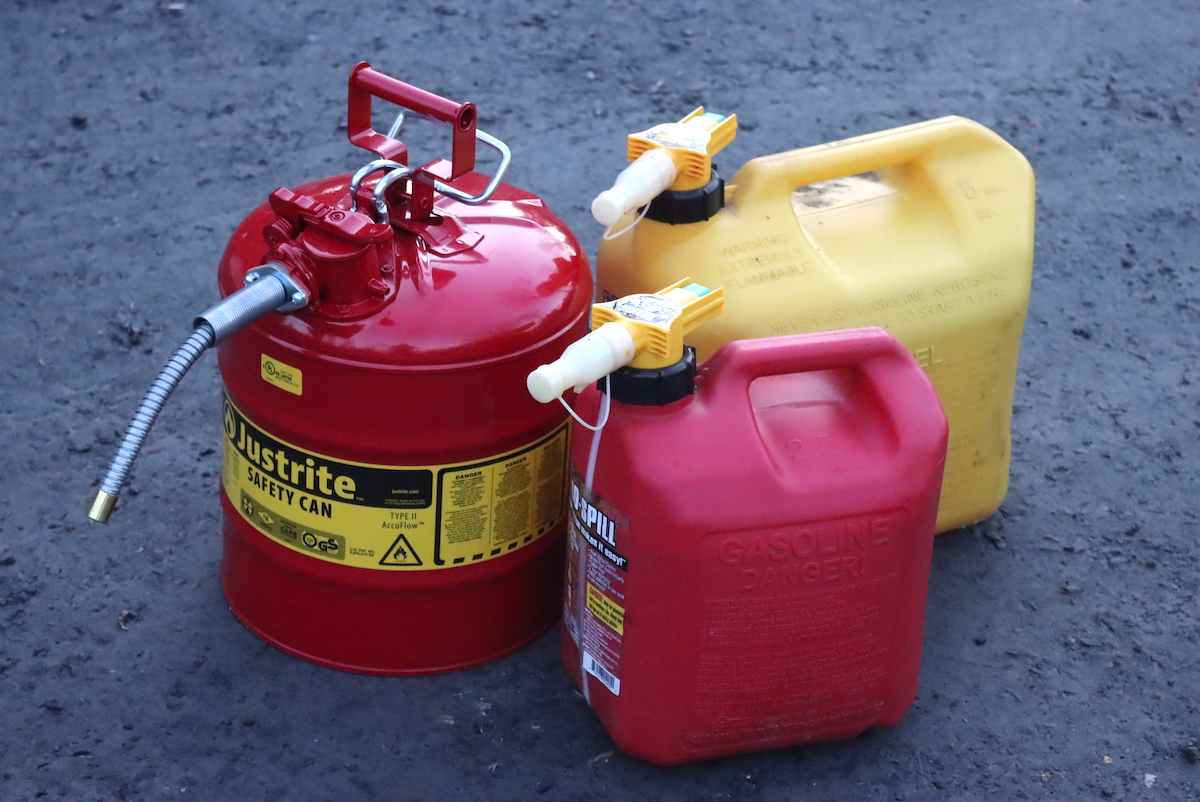
Most gas cans available these days are terrible, due to design limitations imposed by the EPA. The best we have found so far are No-Spill brand, and we’ve given away or sold every gas can we had from other brands.
Friends and neighbors have raved about the metal Justrite cans, so those might also be worth a try. We recently bought one, and we love it. At about 3x the price of a regular gas can, they’re not cheap, but their all-metal design is built to last a lifetime.
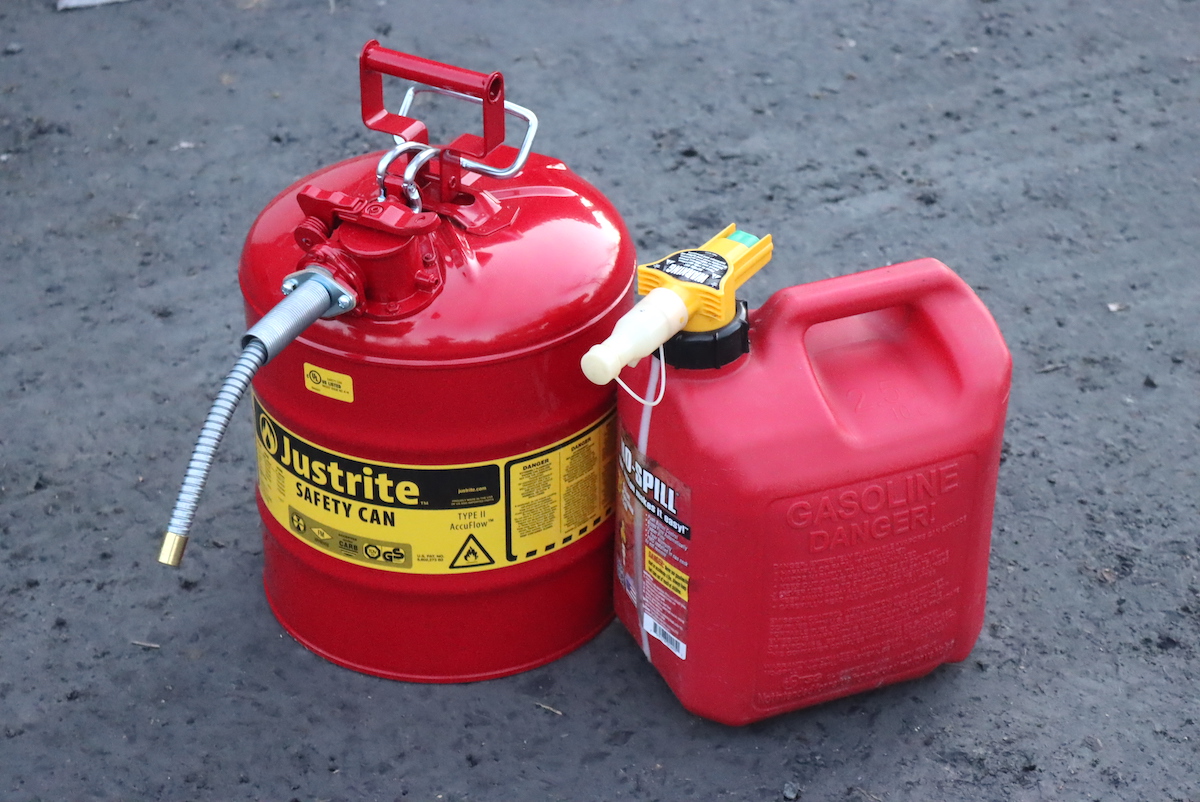
Gasoline should be stored in a safe location, which means, first and foremost, not in your house!
Gasoline vapors are toxic and can potentially explode. A truly ideal location would be in a small metal shed, erected well away from other structures and in a shady spot. But if you only store a few gallons, any place outside the residence and away from any source of sparks, flame, or heat is reasonable.
It should also be in a place where children cannot access it.
How Long Can You Store Gasoline?
Gasoline is not a single substance; it’s a mix of many different complex hydrocarbons, plus (in the United States, at least) a generous helping of ethanol derived from corn. Untreated gasoline begins to break down relatively quickly, and while it will continue to “work”, aged gasoline can cause problems, especially in small engines like chainsaws or mowers.
Most references suggest using regular gasoline within a month of storing it.
There are, however, gasoline stabilizers that you can put in gasoline to extend its shelf life.
Ethanol-free gasoline has the longest shelf life, so if you intend to store gasoline for more than a month, find a gas station that sells ethanol-free gas near you. That usually means buying “premium grade” gasoline, which is a bit more expensive…but it’s much less expensive than rebuilding an engine (be it in your car, lawnmower, or chainsaw).
Ethanol-free gasoline will usually last 3 to 4 months, if properly stored. Still, it’s best to treat the gas with a stabilizer anytime you store gasoline for more than a month, regardless of the type.
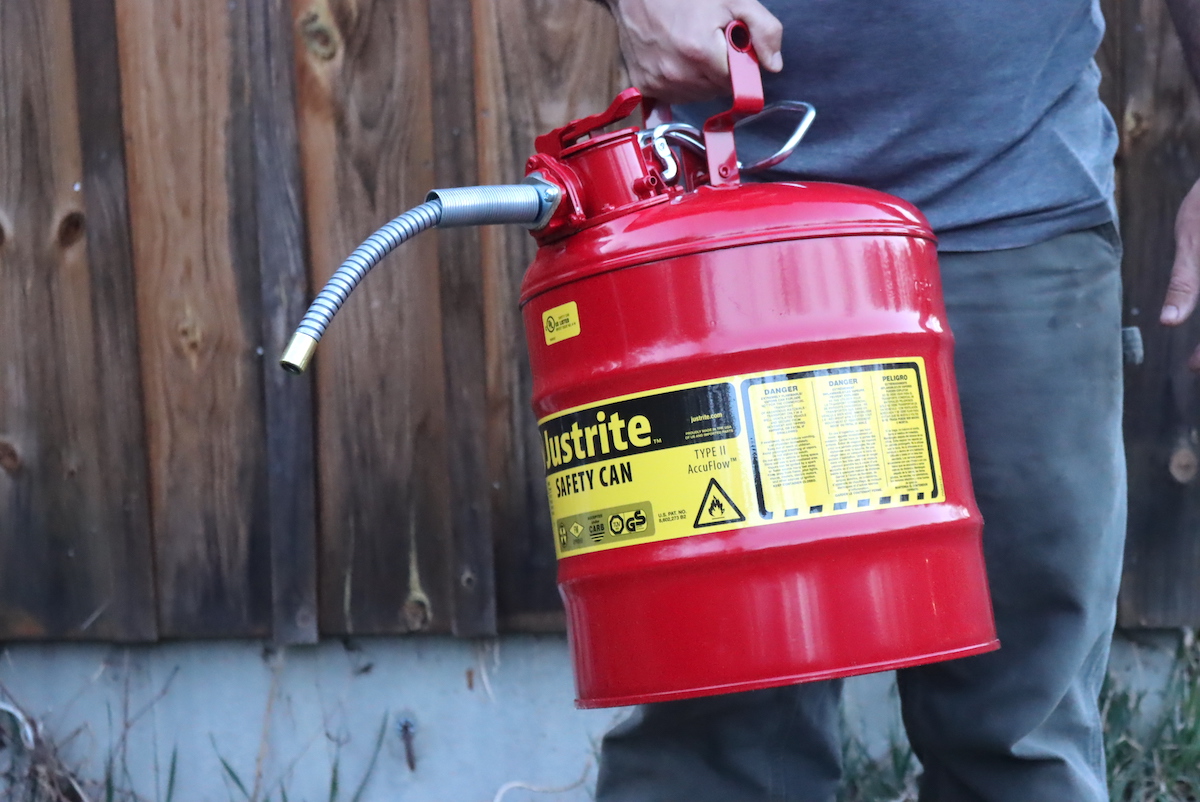
How to Store Gasoline Long Term
To extend the lifetime of gasoline, use fuel stabilizers like Stabil. With the addition of stabilizers, gasoline can keep for as long as two years.
At the recommendation of a logger we got training from some years ago, we started storing only ethanol-free gasoline and using Stabil marine-grade stabilizer. Chainsaws are especially sensitive to gasoline quality, but we have run our saws with gasoline as long as 18 months old and have not had any problems.
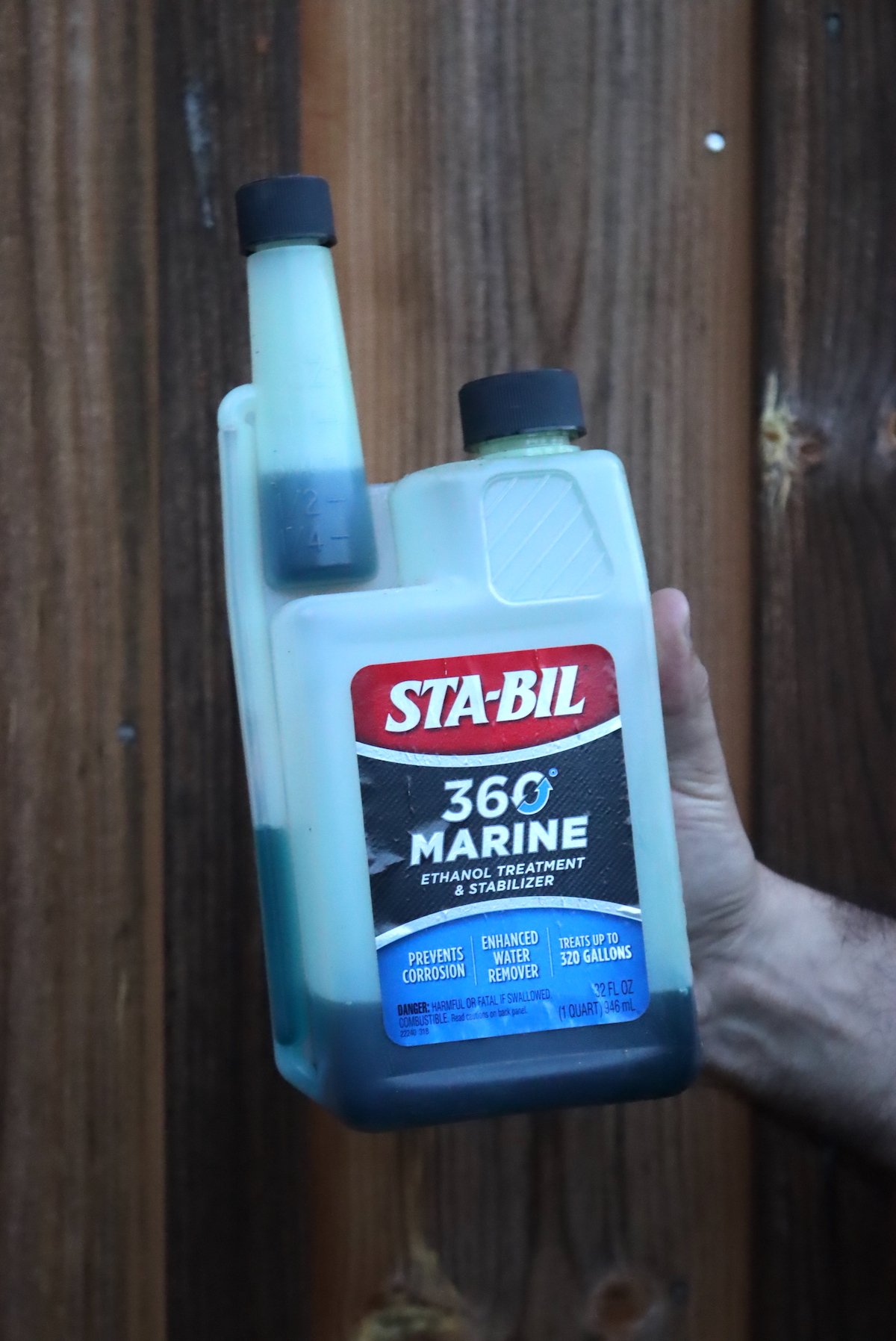
The ethanol-free grades of gasoline tend to be more expensive, but not as expensive as rebuilding a chainsaw or generator engine.
No matter what stabilizer you’re using, it’s best to dispose of gasoline after six months or so. The easiest way to dispose of “old” gasoline is to put it into your car or truck when the tank is about half full. The old gas will mix with the fresh gas already in the tank.
How Much Gasoline Should You Store?
How much gas to store really depends on your particular circumstances. How much does your family need? How long of disruption are you planning for?
In our case, we’re mostly planning for winter ice storms and summer hurricanes that knock out power and potentially drop trees in inconvenient places.
We also store gas for use in our normal everyday yard tools, including:
- Snow Blower
- Lawnmowers
- Brush Hogs
- Chainsaws
We even have a nifty gasoline-powered lantern, and though it doesn’t use much, it really nice to have on hand in an emergency.
Everyone in our household works from home, so we aren’t planning for car commutes, but having a few gallons spare to refuel a vehicle is never a bad idea either. (If we had a commute, especially to an essential service job, we’d store more gasoline to ensure we’d have it on hand even if the pumps weren’t operating.)
All in all, we store around 20 gallons of gasoline on our homestead here in rural Vermont, and it takes care of most contingencies.
We cycle our gas every spring and fall by adding it to a half-full gas tank on our vehicles. That way, it’s never stored for more than six months at a time, and we always have enough on hand for the coming season, be it summer or winter.
We always add stabilizers to our gasoline, and buy ethanol free whenever possible.
Beyond gasoline, we also store diesel fuel for our tractor, which we use to plow the driveway, split wood, winch trees over, chip brush, and dig drainage ditches with various attachments. There’s a good chance we’d need it in an emergency, either to plow ourselves out after a heavy snowstorm or to help deal with tangled, downed trees.
The tank holds around 10 gallons of diesel, but we keep another 10 gallons around just to be safe.
In total, we store 20 gallons of gasoline and 10 gallons of diesel, but obviously, when you’re storing gasoline the total amount will depend on your situation, location, and uses.
Preparedness Resources
Looking for more preparedness resources?
- Best (and Worst) Emergency Food Suppliers
- How to Prepare for WWIII
- Survival Gardening: Our Real Life Dry Run
- Best MRE Meals (Meals Ready to Eat)
- Emergency Water Filtration Options
